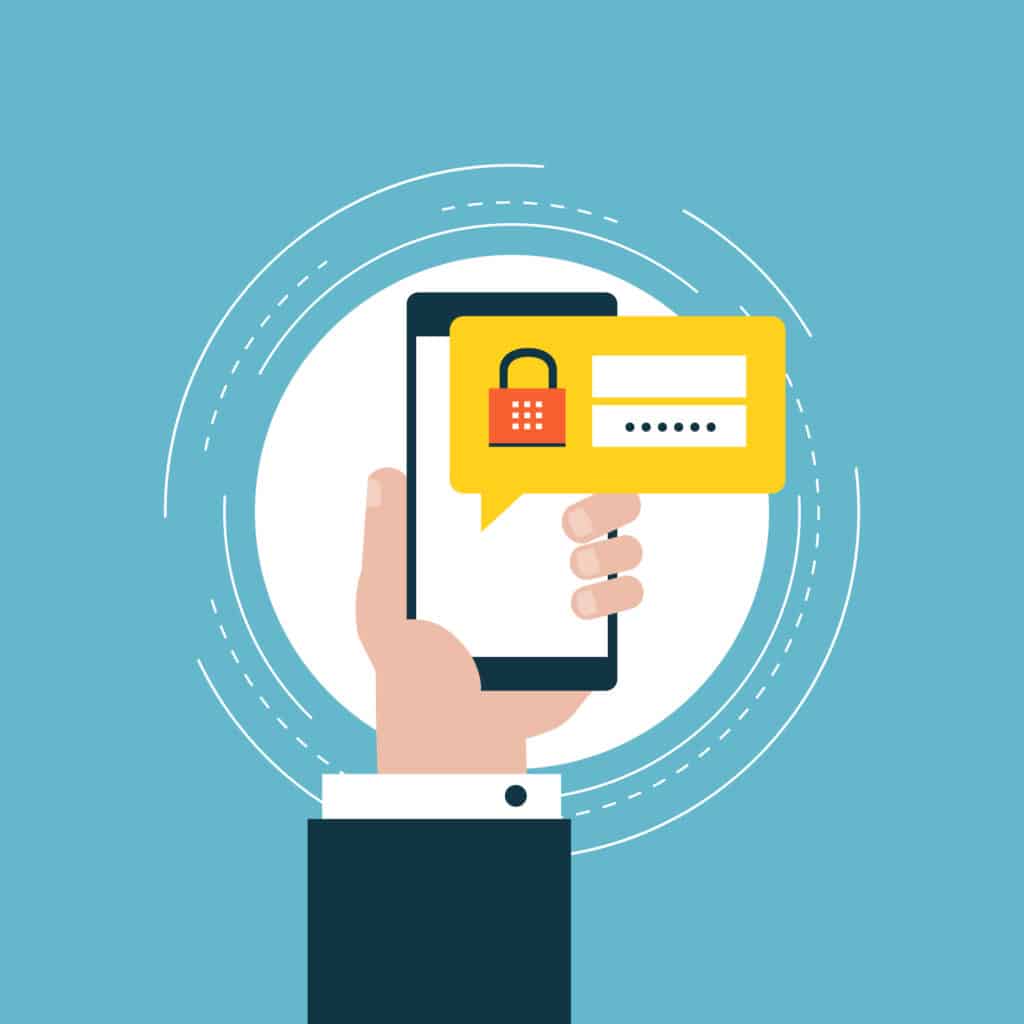Identity Verification Best Practices For Businesses And Consumers

Identity verification holds great importance in the current digital era, characterized by prevalent identity theft and fraud. This guide delves into the significance of identity verification and the potential risks associated with failing to verify one’s identity. It explores the mechanisms of identity verification, identity verification best practices, the requisite information, and the diverse methods employed.
Topics covered include recommended practices for businesses and consumers, various forms of identity verification, regulatory frameworks governing the process, and technological advancements that are reshaping the identity verification landscape.
Keep reading to discover more about safeguarding your identity and personal information.
Why is Identity Verification Important?
Identity verification is essential for businesses and consumers to ensure trust, security, and compliance in online transactions. It plays a key role in preventing fraud, identity theft, and unauthorized access to personal information.
In today’s digital age, where virtual interactions are prevalent, the importance of robust identity verification processes is more crucial than ever. By verifying the identities of individuals participating in online activities, businesses can establish a level of trust that is vital for building lasting customer relationships. Strict identity verification measures also bolster security protocols, protecting sensitive data from unauthorized access.
Not only does this shield individuals from potential identity theft and fraudulent activities, but it also ensures that regulatory requirements are upheld in a constantly changing digital environment.
What are the Risks of Not Verifying Identity?
Failure to verify identity poses significant risks for businesses and consumers, including potential data breaches, financial losses, regulatory penalties, and reputational damage.
Without robust identity verification practices in place, businesses expose themselves to the peril of cybercriminals gaining unauthorized access to sensitive information, leading to data breaches that can have far-reaching consequences. Financial liabilities may arise from fraudulent activities that exploit weak verification methods. Non-compliance with regulations also opens the door to hefty penalties and legal ramifications. A tarnished brand reputation resulting from identity-related fraud can lead to a loss of customer trust and credibility in the competitive market landscape.
How Does Identity Verification Work?
Identity verification entails confirming individuals’ identities using different methods and technologies to secure access and transactions. This process usually involves verifying personal information like name, date of birth, and contact details, as well as more advanced methods such as biometric verification and document authentication. Biometric technologies like facial recognition and fingerprint scanning are used to establish a distinct identity based on physical characteristics. Document verification includes scanning and examining official documents such as driver’s licenses or passports to validate them. These multi-layered authentication protocols assist organizations in reducing fraud risks and protecting user data.
What Information is Required for Identity Verification?
For identity verification, individuals are typically asked to provide personal details like name, address, date of birth, and government-issued identification documents.
These details are essential for establishing a reliable user identification process. Accuracy in the information provided is crucial to ensure successful and secure identity verification. Government-issued identification documents such as driver’s licenses, passports, or national identity cards are commonly used to verify individuals’ identities.
Verifying personal details and comparing them with official documents aids in preventing identity theft and fraud. Ensuring the accuracy of these details improves the overall security measures implemented to safeguard both individuals and institutions.
What Methods are Used for Identity Verification?
Different methods are utilized for identity verification, which include knowledge-based verification, biometric verification, document verification, and two-factor authentication.
These methods play a critical role in ensuring the security and legitimacy of individuals’ identities.
- Knowledge-based verification relies on personal information that only the user should know, like passwords or security questions.
- Biometric verification uses unique physical characteristics such as fingerprints or facial recognition for precise identification.
- Document verification entails examining official documents such as IDs or passports to validate identity.
- Two-factor authentication enhances security by requiring both a password and a secondary verification method like a code sent to a phone or email.
Each method contributes to a thorough and strong identity verification process.
Best Practices for Businesses and Consumers in Identity Verification
Adopting best practices in identity verification is crucial for both businesses and consumers to improve security, establish trust, and adhere to regulatory requirements.
Implementing strong identity verification methods not only protects sensitive information but also reassures customers that their data is secure. Using a mix of verification techniques like two-factor authentication, biometrics, and knowledge-based authentication can significantly enhance the verification process.
Regularly updating verification processes is essential to stay ahead of evolving security threats. Transparent communication with customers about verification procedures helps promote openness and create a smooth user experience. By incorporating these practices, businesses can create a secure and reliable environment for all parties involved.
1. Use Multiple Verification Methods
The use of multiple verification methods can enhance the security and accuracy of identity verification processes for both businesses and consumers.
By incorporating a variety of verification techniques such as passwords, biometrics, two-factor authentication, and security questions, organizations can reduce the risk of unauthorized access and identity theft. This multi-layered approach not only strengthens security measures but also offers a more dependable way to confirm individuals’ true identities.
The integration of different verification methods increases complexity for potential cyber attackers, making it more challenging for them to breach systems and access sensitive data. Employing multiple verification methods is considered a best practice for ensuring robust security and authentication protocols in the current digital landscape.
2. Keep Data Secure
Implementing strong data security measures is a crucial best practice in identity verification to protect sensitive personal information from unauthorized access and breaches. This involves utilizing encryption techniques to encode data, rendering it unreadable to unauthorized users. Access controls are important for restricting who can access, modify, or distribute sensitive information. Secure storage practices entail storing data in encrypted formats and secure locations to prevent data breaches. By integrating these key elements of data security into the identity verification process, organizations can improve the security of individuals’ personal data and establish trust with their customers.
3. Regularly Update Verification Processes
Regularly updating verification processes is essential to keep pace with evolving threats, technological advancements, and regulatory requirements in identity verification.
By maintaining a proactive approach and ensuring that verification methods are consistently adjusted to address emerging risks, businesses can significantly strengthen their defense mechanisms against fraudulent activities. Incorporating state-of-the-art technologies and tools as part of ongoing updates can not only improve security protocols but also streamline operations for a more seamless customer experience.
Compliance standards are fluid and constantly evolving, underscoring the importance for organizations to routinely assess and modify their verification processes. These proactive steps not only help mitigate risks but also cultivate trust and credibility with clients and partners in an increasingly digital environment.
4. Provide Clear Communication to Customers
Effective communication with customers about identity verification processes is essential for building trust and ensuring a positive user experience. Providing clear instructions on the required information and its purpose can help streamline verification and improve customer satisfaction. Educating customers on the importance of identity verification in preventing fraud and protecting their accounts can lead to a smoother process for everyone. Offering accessible customer support options helps users feel supported during verification, ultimately fostering trust and loyalty towards the company.
1. Protect Personal Information
Protecting personal information from unauthorized disclosure or misuse is a fundamental best practice in identity verification for both businesses and consumers.
Ensuring the security of personal data is essential to maintain privacy and uphold trust between individuals and organizations. Data breaches can have serious consequences, including financial losses, identity theft, and harm to reputation. By following data privacy regulations like GDPR and CCPA, companies can stay compliant and incorporate secure data handling practices.
Consent is a crucial element in this process, as individuals should have the ability to dictate how their data is collected and used. Emphasizing data protection not only safeguards sensitive information but also encourages a culture of respecting privacy rights.
2. Be Aware of Scams
It is crucial for businesses and consumers to remain vigilant and informed about common scams and fraudulent schemes in order to prevent identity theft and financial losses.
One important precaution to take against identity theft is to exercise caution when asked to provide sensitive personal information, like social security numbers or login credentials, especially through unsolicited emails or messages. These phishing attempts often impersonate legitimate organizations, so it is important to verify the source independently before sharing any details.
Regularly monitoring financial statements and credit reports can aid in detecting any unusual activity that may suggest potential identity theft. By maintaining a proactive and skeptical approach, individuals can significantly reduce their susceptibility to identity fraud.
3. Monitor Credit and Financial Accounts
Regularly monitoring credit reports and financial accounts is a proactive best practice to detect and address potential identity fraud or unauthorized activities.
By staying vigilant and regularly checking credit reports and financial statements, individuals can catch any suspicious transactions early on, preventing further damage to their finances. Promptly identifying unauthorized activities gives individuals the opportunity to take immediate action by contacting their financial institution or credit card company to report the issue. Along with monitoring accounts, setting up fraud alerts and freezing credit when necessary can provide an extra layer of protection against potential fraudsters trying to exploit personal information.
Types of Identity Verification
Identity verification involves a range of methods such as knowledge-based verification, biometric verification, document verification, and two-factor authentication that aim to ensure secure and reliable authentication processes.
Each of these methods serves a distinct purpose in enhancing security measures and verifying the identity of individuals. Knowledge-based verification relies on personal information that only the correct individual should know, making it challenging for unauthorized access. Biometric verification, on the other hand, utilizes physiological characteristics like fingerprints or facial recognition for authentication, providing a highly secure and convenient method. Document verification entails validating official documents to establish the identity of the person, while two-factor authentication adds an extra layer of security by combining something the user knows (like a password) with something they have (like a mobile device).
1. Knowledge-based Verification
Knowledge-based verification relies on personal information that only the individual should know, such as past addresses, financial details, or account history, to authenticate identity.
This method is based on the premise that certain facts or characteristics about a person are unique to them, making it difficult for impostors to mimic or access. By asking specific questions about the person’s life history, behaviors, or preferences, knowledge-based verification establishes a layer of security beyond simple passwords or PIN codes.
This approach also has its limitations, as personal details may change over time, creating challenges in accurately verifying identity. The reliance on static information poses a risk if the data is compromised or leaked, potentially leading to identity theft or fraud.
2. Biometric Verification
Biometric verification employs unique biological traits such as fingerprints, facial features, or iris patterns to confirm individuals’ identities, providing a highly secure and dependable method of authentication.
By utilizing inherent physical characteristics, biometric technology significantly enhances security measures by greatly reducing the likelihood of unauthorized access or identity theft. The accuracy of biometric verification is unmatched, as each person possesses distinct biological markers that are difficult to replicate.
The convenience of biometric authentication is noteworthy, eliminating the necessity to remember and manage multiple passwords or carry identification documents. These advancements have resulted in the widespread adoption of biometric systems in various industries, including finance, healthcare, and law enforcement, transforming how identity verification is carried out.
3. Document Verification
Document verification is the process of confirming identity by using official documents like driver’s licenses, passports, or national IDs to validate the individual’s identity. This verification process is crucial across various sectors such as banking, healthcare, and immigration. By cross-referencing personal details on different documents, organizations can reduce the risk of identity theft and fraud.
Despite challenges like the emergence of sophisticated fake documents that necessitate advanced verification technologies, the advantages of document authentication are significant. These benefits include improved security, adherence to regulations, and the fostering of trust with customers. Verifying official documents is fundamental to establishing secure and dependable interactions in today’s digital landscape.
4. Two-Factor Authentication
Two-factor authentication enhances security by requiring users to provide two forms of verification: something they know (password) and something they have (smartphone or token).
This method increases security significantly by making it more challenging for unauthorized individuals to access sensitive information or systems. In the face of evolving cyber threats, traditional single-factor authentication methods are no longer enough to protect user identities. Two-factor authentication helps guarantee that even if one factor is compromised, the second layer of verification serves as a deterrent.
Adopting this approach can assist organizations in protecting against data breaches and unauthorized access attempts, offering peace of mind and reinforcing overall security measures.
Regulations and Laws Surrounding Identity Verification
Identity verification is governed by various regulations and laws, such as KYC (Know Your Customer), AML (Anti-Money Laundering), and GDPR (General Data Protection Regulation), to ensure secure and compliant practices. These regulations are crucial in protecting sensitive personal information and preventing fraudulent activities in financial transactions.
For businesses, compliance with KYC, AML, and GDPR requirements is not only a legal obligation but also a means to establish trust with customers and safeguard their data. Non-compliance with these regulations can result in significant fines, harm to reputation, and potential legal repercussions.
From the consumer perspective, these regulations provide increased protection against identity theft and unauthorized use of personal data, fostering a more secure digital environment.
1. KYC (Know Your Customer)
Businesses are required to comply with Know Your Customer (KYC) regulations, which involve verifying customer identities and assessing risks to prevent money laundering, terrorist financing, and fraud.
Thorough customer due diligence is essential for ensuring that businesses are not unwittingly involved in illicit activities. KYC regulations are designed to establish a framework that encourages transparency in financial transactions and fosters trust between financial institutions and their customers. The risk assessment component of KYC aids businesses in identifying and addressing potential threats, thereby safeguarding the integrity of the financial system. Implementing KYC measures not only strengthens security but also bolsters organizations’ overall compliance efforts, contributing to the broader fight against financial crimes and adherence to regulatory standards.
2. AML (Anti-Money Laundering)
AML regulations mandate that businesses establish strong identity verification processes, transaction monitoring, and reporting mechanisms to prevent money laundering activities.
These regulations are implemented to guarantee that financial institutions and other regulated entities maintain stringent due diligence standards in confirming the identity of their customers and overseeing their transactions for any suspicious behavior. By establishing precise guidelines for customer onboarding processes and continual monitoring, AML laws strive to identify and prevent money laundering risks efficiently. Reporting requirements necessitate these businesses to promptly alert the authorities of any unusual or potentially criminal activities, aiding in creating a more transparent financial system.
3. GDPR (General Data Protection Regulation)
The GDPR establishes data protection and privacy standards that affect identity verification practices by highlighting transparency, consent, and data security for European Union residents.
One of the main aspects of the GDPR is the mandate for businesses to acquire explicit consent from individuals before gathering and processing their personal data, ensuring that users have authority over the usage of their information. The GDPR also offers individuals specific rights regarding their data, like the right to access, correct, and delete their personal data. This provides consumers with greater control over their online identities and strengthens their privacy.
Businesses must adhere to these regulations, requiring them to implement strong data protection measures and systems to safeguard user information.
Advancements in Identity Verification Technology
Advancements in identity verification technology, such as artificial intelligence, blockchain, and mobile verification, have transformed the accuracy, efficiency, and security of authentication processes.
These state-of-the-art technologies have not only simplified the verification process but also significantly bolstered security measures by utilizing AI algorithms to identify fraudulent activities in real-time. Blockchain technology guarantees unchangeable records, diminishing the risk of data tampering and unauthorized access. On the other hand, mobile verification offers a convenient and user-friendly authentication method, enabling users to swiftly and securely confirm their identities through their smartphones.
These developments have had a significant impact on enhancing security, enhancing user experience, and ensuring compliance with regulatory requirements in various industries.
1. Artificial Intelligence
Artificial intelligence facilitates smart automation and decision-making within identity verification processes, improving accuracy, speed, and risk management capabilities.
By utilizing predictive analytics, AI can examine extensive datasets to identify patterns and anomalies that conventional methods could overlook, making it a valuable asset in efforts to prevent fraud. Its capacity to adjust and glean insights from new data enables ongoing enhancements in risk detection and mitigation, guaranteeing adherence to regulatory norms.
AI-powered user authentication procedures provide heightened security features, like biometric recognition, which bolster overall identity verification protocols.
2. Blockchain Technology
Blockchain technology provides decentralized and immutable identity verification solutions, improving security, privacy, and data integrity in authentication processes.
By utilizing its distributed ledger, blockchain ensures that identity verification data is distributed across a network of nodes instead of a central server. This setup reduces vulnerability to single points of failure or hacking attempts. The cryptographic security measures integrated into blockchain technology protect user identities through advanced encryption techniques, offering a high level of defense against unauthorized access and tampering. The trustless authentication function removes the necessity for intermediaries or trusted third parties, allowing secure verification directly between transacting parties.
3. Mobile Verification
Mobile verification uses smartphones and mobile devices for secure user authentication, providing convenient and accessible identity verification solutions. By employing mobile verification, individuals can verify their identities easily at any time and location with a few taps on their smartphones. The incorporation of biometric features like fingerprints or facial recognition enhances the security of the authentication process, making it harder for unauthorized users to access.
Along with its security advantages, mobile verification offers a smooth user experience, eliminating the necessity for cumbersome hardware tokens or physical IDs. This streamlined method not only saves time for users but also lowers the chances of identity theft and fraud.
Frequently Asked Questions
1. What is identity verification and why is it important for businesses and consumers?
Identity verification is the process of verifying the identity of an individual or entity to ensure that they are who they claim to be. This is crucial for businesses to prevent fraud, comply with regulations, and protect sensitive information of their customers. Similarly, for consumers, identity verification helps in safeguarding their personal information and preventing identity theft.
2. What are some best practices for businesses to follow for identity verification?
Businesses should implement a multi-factor authentication system, which combines at least two forms of identification (e.g. password and biometric verification) for a more secure process. They should also regularly update their security protocols, conduct risk assessments, and train employees on identity theft prevention.
3. How can consumers protect their identity during online transactions?
Consumers should use strong and unique passwords for all their online accounts, avoid using public Wi-Fi for sensitive transactions, and regularly check their accounts for any suspicious activity. They should also be cautious of phishing scams and only share personal information on trusted and secure websites.
4. Can businesses use third-party identity verification services?
Yes, businesses can opt for third-party identity verification services that offer advanced technology and expertise in verifying identities. These services can help businesses streamline their verification process and reduce the risk of fraudulent activities.
5. Are there any regulations that businesses must comply with for identity verification?
Yes, businesses must comply with various regulations such as Know Your Customer (KYC), Anti-Money Laundering (AML), and General Data Protection Regulation (GDPR) that require them to verify the identities of their customers. Failure to comply with these regulations can result in legal consequences and damage to the business’s reputation.
6. How can businesses balance security and customer experience during the identity verification process?
Businesses can utilize technologies such as biometric authentication or digital identity verification to ensure a secure and seamless verification process for their customers. They can also offer options for customers to choose their preferred method of verification, providing a more personalized and user-friendly experience.



